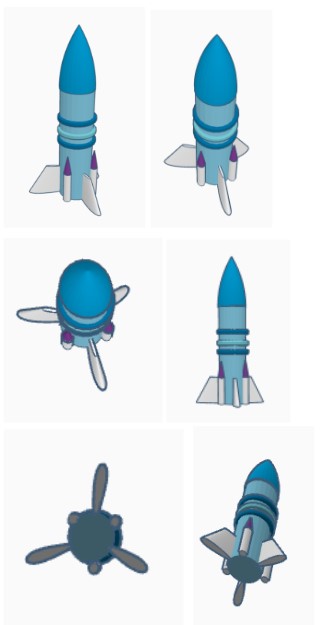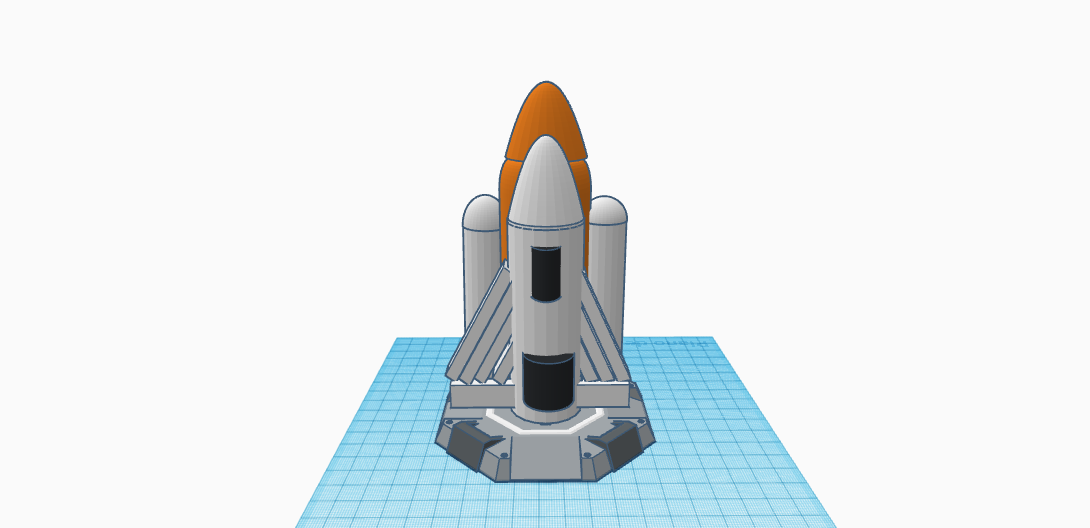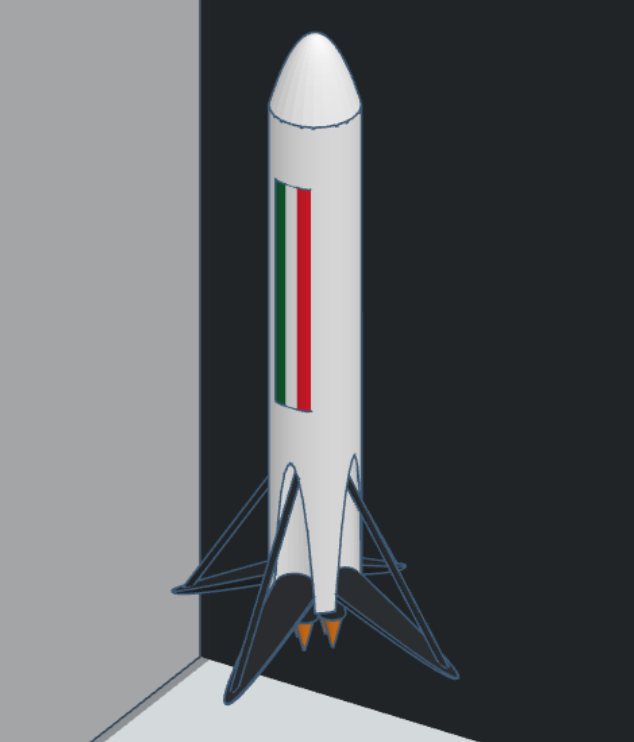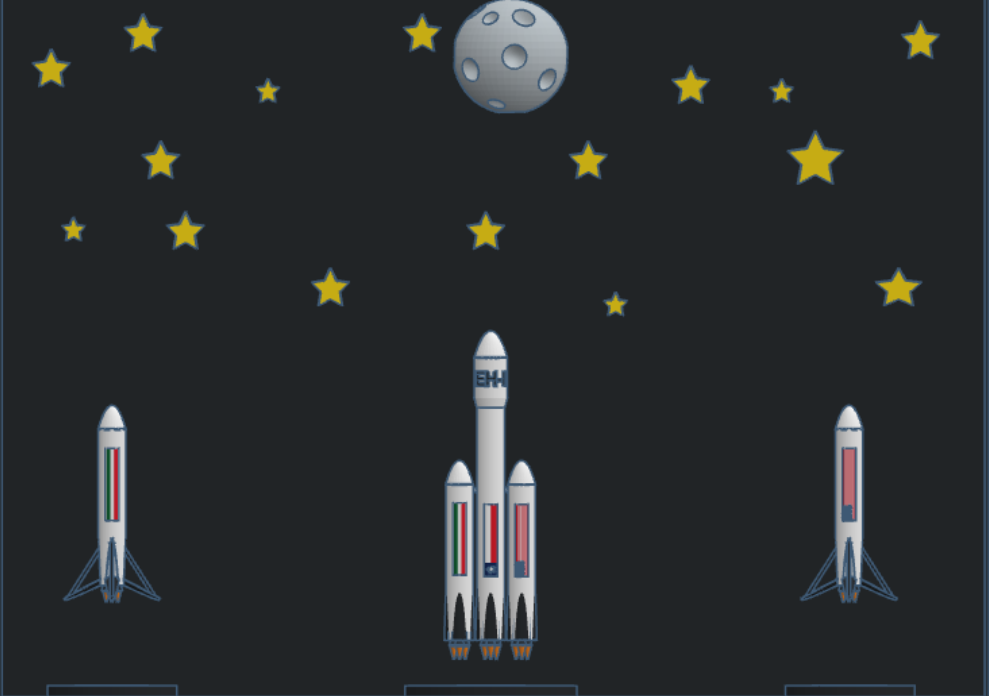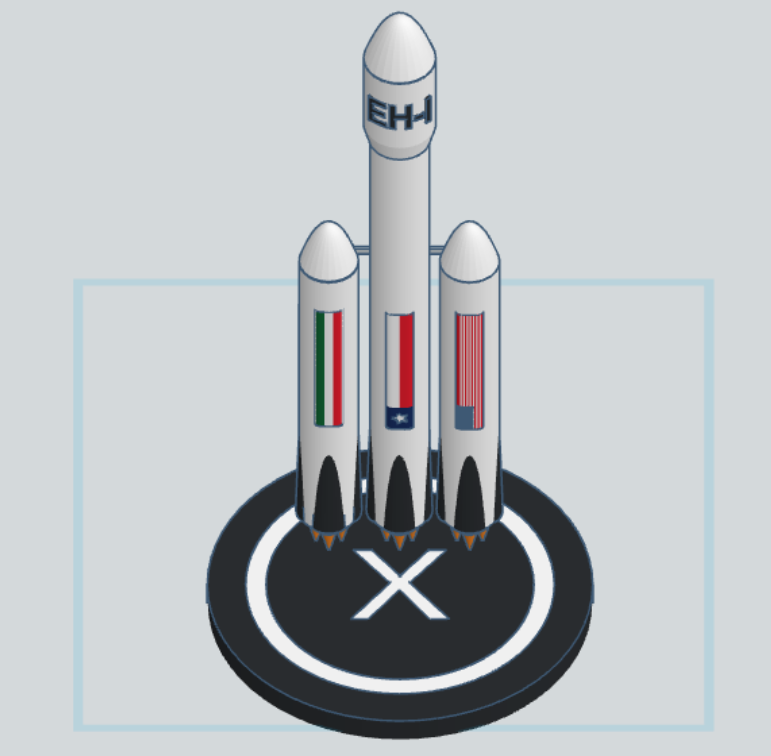Moon Camp Discovery 2021-2022 Project Gallery
All | Lunar lander | Moon Base | Lunar rover | Rocket | Lunar Orbital Space Station | Space Suit
Team: Peasshotters- Zoi- Maria Podia and Stuti Bonagiri
Category: Rocket | Bergen | Netherlands | 2 | 13 years old, 14 years old
External link for Tinkercad 3D design
Project description
OUR DESIGN:
- The rocket has a slim shape for it to have a smoother and easier flight
- 3 nuzzles for an extra push/thrust so the rocket goes further at the take-off (they will fall off once take-off is secure and good)
- 3 stabilizers so the ride isn’t bumpy
- What does a rocket need to get to the moon?
The rocket needs to carry the crew in low Earth orbit with the departure stage and lunar lander brought up by the cargo rocket. The departure stage will fire the thrusters and send the rocket to the moon.
- What materials are used for a rocket?
For the main frame:
- aerospace grade aluminum
- titanium
since both metals are very strong but light weight. Aluminum, however, melts at high reentry temperatures.
For the inner wall of the rocket:
- engine is made of copper alloys (typically, chromium copper).
- It can withstand the heat of 3,000°C (from the nozzles during launch.)
- Other good metals used in rockets are titanium and silver.
Achieve low Earth orbit :
- Escape velocity is the velocity needed to escape a planet’s gravity completely, while orbital velocity is the velocity needed to go into orbit around a planet.
- Escape velocity for Earth’s surface is 25,000 mph or 7 miles per second (40,248 km/hrs or 11.2 km/s)
- orbital velocity at the surface of Earth’s surface is 18,000 mph (7.9 km/s) -> it takes less energy to achieve orbital velocity than escape velocity.


